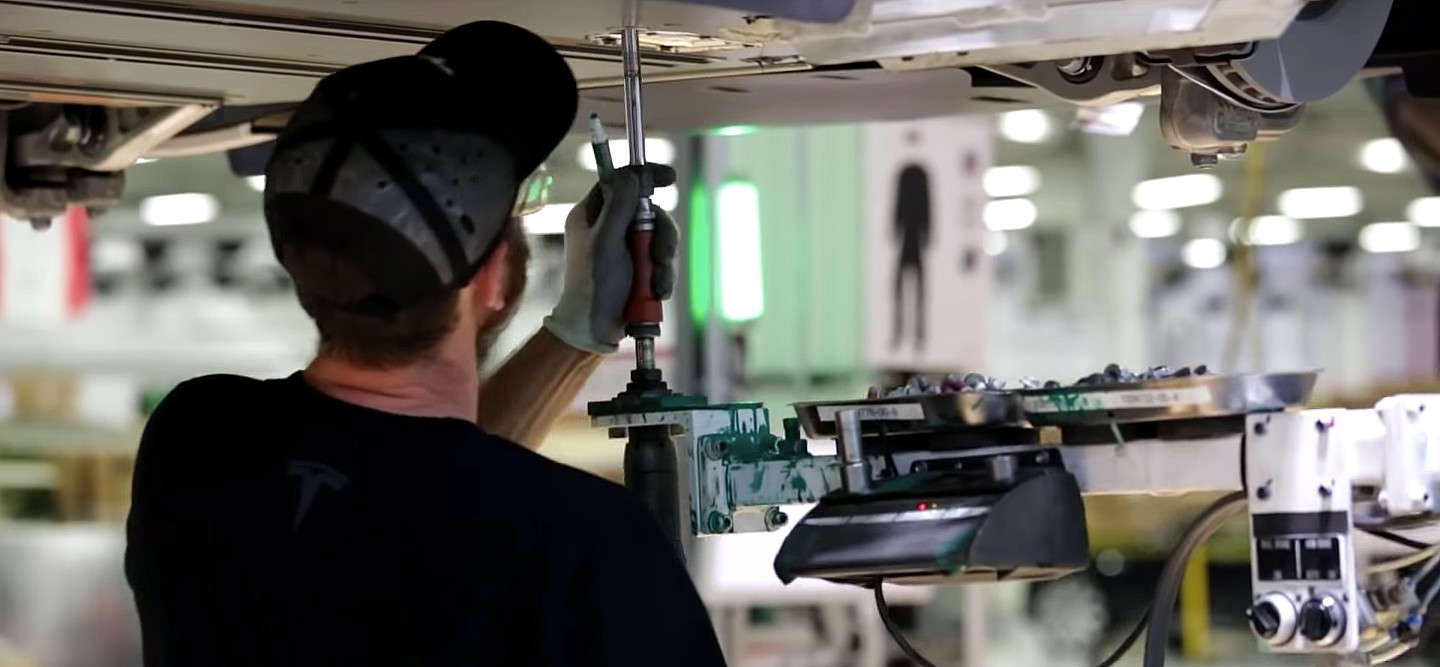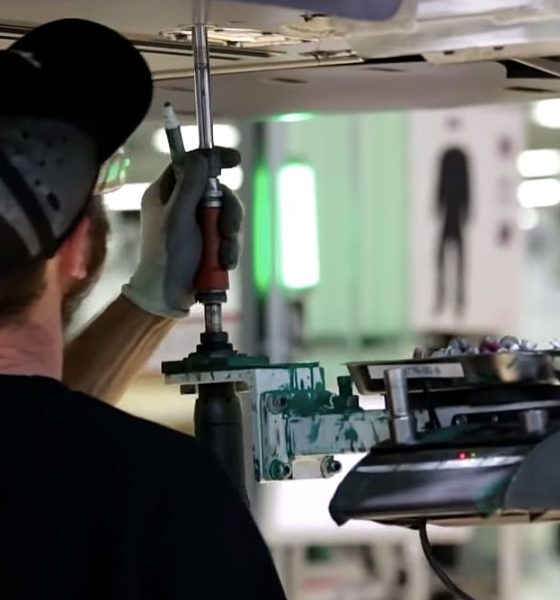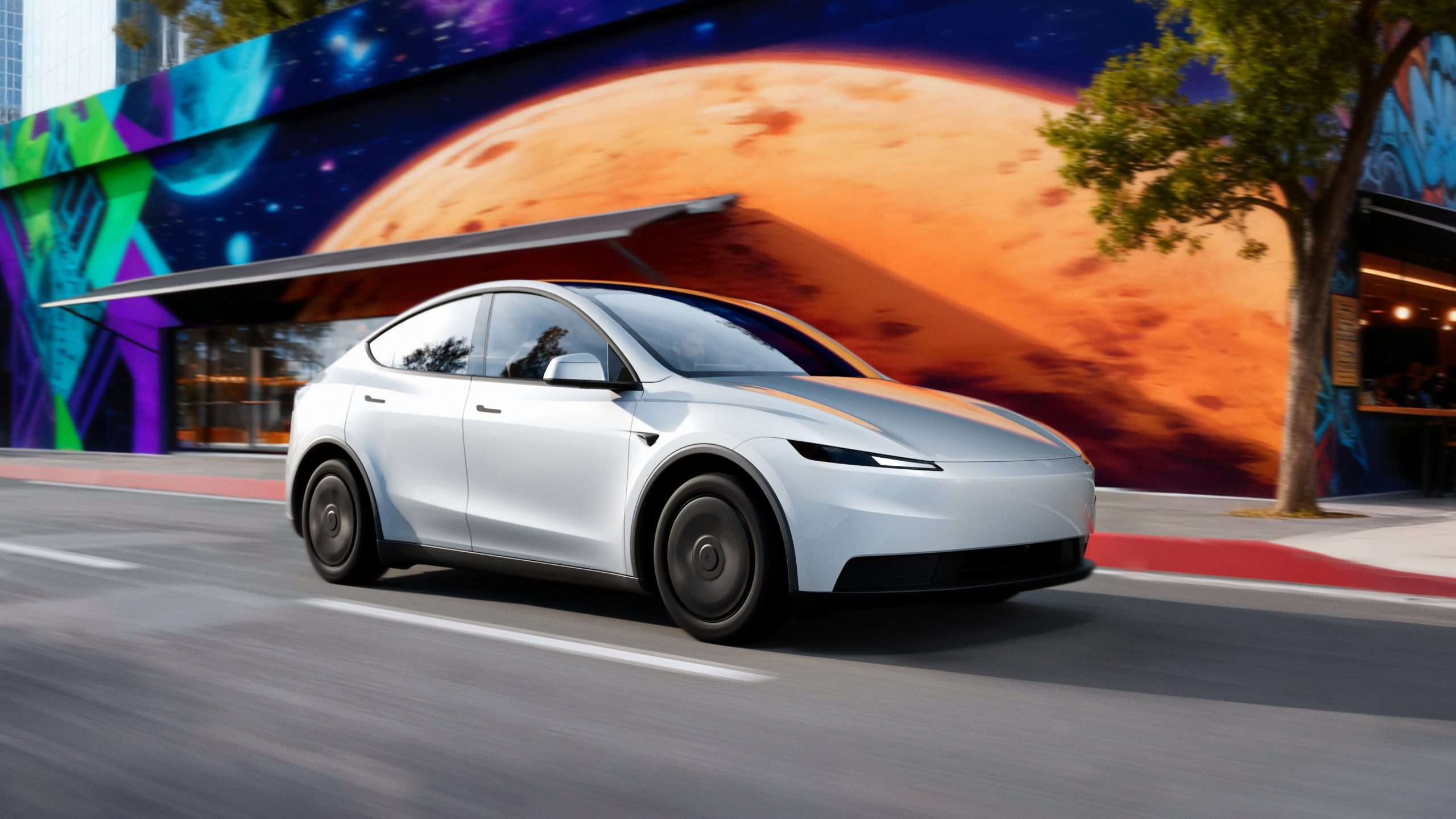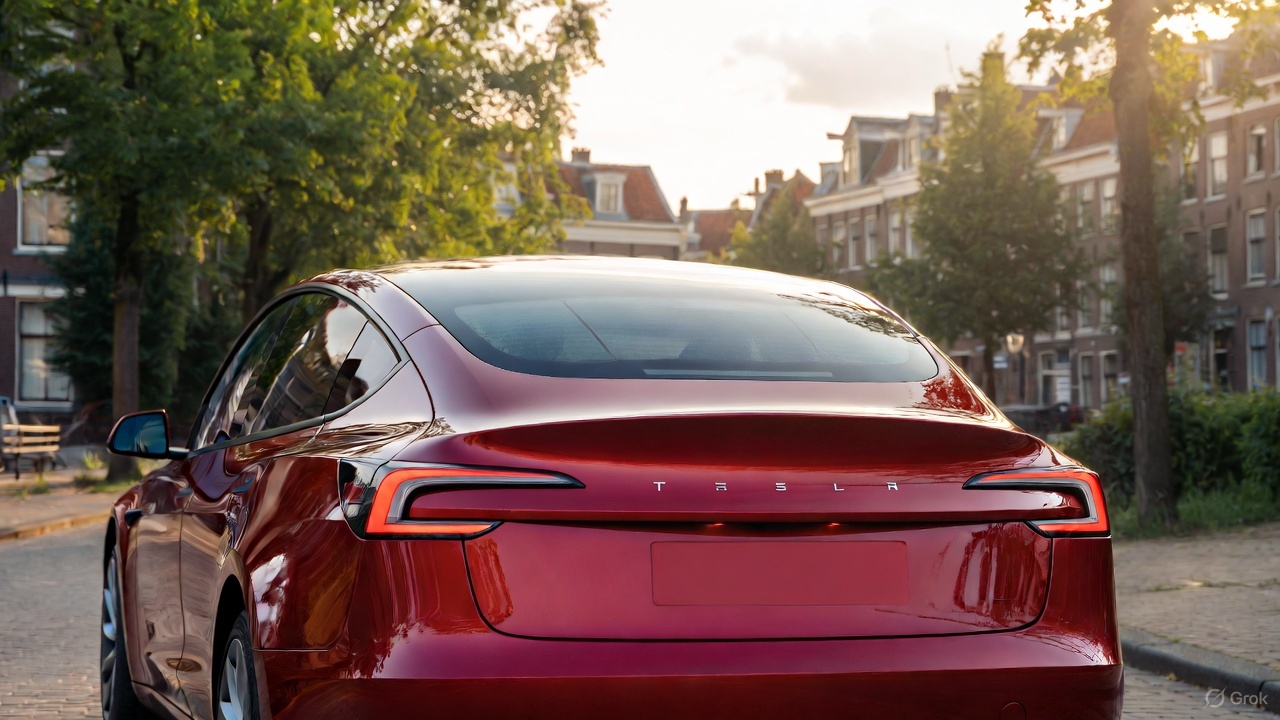

News
Tesla’s vertical integration and preparation were keys to avoiding chip shortage: Reuters
Tesla seemed to be made of Teflon in 2020 and 2021, as the company seemed to avert the semiconductor chip shortage with relative ease, while longstanding and prestigious automakers scaled back production due to the lack of supplies. Tesla, a company run like no other, avoided these chip shortages by using its vertical integration and preparation, along with some other strategic moves, to solidify its company’s position as the big winner of the uncertain 2020 and 2021 global automotive market.
After reporting that it had crushed Wall Street consensus expectations regarding Q4 2021 deliveries, Tesla shares skyrocketed over 13% yesterday. The unlikely, small-but-mighty car company now based out of Austin, Texas, after a more than a decade-long relationship with Northern California, which had its ups and downs, averted crisis over the past two years, and continued its streak of manufacturing growth, by keeping itself stocked on the various chips and semiconductors that keep its vehicles moving.
Strategies like delivering some cars with missing parts, like USB ports or Bluetooth chips, or even axing lumbar support in some cars, helped make things easier to build. These strategies, along with various price raises to address higher part costs and expedited shipping measures, helped keep the balance sheet healthy. Customers may have paid more for their cars than they would have in early 2021, but it did not affect sales figures like one might expect. Tesla beat Wall Street estimates by 16% when it released delivery figures for the final quarter of 2021.
Momentum started when Tesla stated in its Q2 2021 Earnings Call that it had developed a series of 19 microcontrollers in-house that would help avoid the chip shortage. “Our team has demonstrated an unparalleled ability to react quickly and mitigate disruptions to manufacturing caused by semiconductor shortages,” the company wrote in its Shareholder Deck for Q2. “Our electrical and firmware engineering teams remain hard at work designing, developing, and validating 19 new variants of controllers in response to ongoing semiconductor shortages.”
RELATED:
Tesla delivers record 241,300 cars in Q3, handily beating consensus estimates
This is just one part of Tesla’s vertical integration, which helps the company avoid the massive shipping bottlenecks that kept cars away from customers for the majority of 2021. Other companies were forced to delay production and deliveries; there just were not enough chips to go around. However, Tesla’s key advantage over other OEMs was the fact that many elements of its products are designed in-house, down to the most complex portions of a design. “We’re designing and building so much more of the car than other OEMs, who will largely go to the traditional supply base and like I call it, catalog engineering. So it is not very adventurous,” CEO Elon Musk said during the Q3 2020 Earnings Call.
Reuters spoke to a Tesla insider who is involved in the engineering of the company’s chips, which shed light on how effective the vertical integration advantage is. “We design circuit boards by ourselves, which allow us to modify their design quickly to accommodate alternative chips like powerchips,” the employee told Reuters.
The series of in-house chips, which were easily modified to accommodate other types of chips that Tesla was in need of, was not the only strategy the automaker used to avoid bottlenecks. Tesla also prepared by not halting the number of chips it had ordered from suppliers, a move that other car companies did not replicate. Instead, Tesla never reduced its production forecast because of the pandemic or supply chain shortages, which may have been its most crucial move. “They’ve just been smarter about it than other companies in terms of making sure there’s buffer stock,” a supplier executive for Tesla indicated.
I’d love to hear from you! If you have any comments, concerns, or questions, please email me at joey@teslarati.com. You can also reach me on Twitter @KlenderJoey, or if you have news tips, you can email us at tips@teslarati.com.

Elon Musk
Tesla CEO Elon Musk sends rivals dire warning about Full Self-Driving

Tesla CEO Elon Musk revealed today on the social media platform X that legacy automakers, such as Ford, General Motors, and Stellantis, do not want to license the company’s Full Self-Driving suite, at least not without a long list of their own terms.
“I’ve tried to warn them and even offered to license Tesla FSD, but they don’t want it! Crazy,” Musk said on X. “When legacy auto does occasionally reach out, they tepidly discuss implementing FSD for a tiny program in 5 years with unworkable requirements for Tesla, so pointless.”
I’ve tried to warn them and even offered to license Tesla FSD, but they don’t want it! Crazy …
When legacy auto does occasionally reach out, they tepidly discuss implementing FSD for a tiny program in 5 years with unworkable requirements for Tesla, so pointless. 🤷♂️
🦕 🦕
— Elon Musk (@elonmusk) November 24, 2025
Musk made the remark in response to a note we wrote about earlier today from Melius Research, in which analyst Rob Wertheimer said, “Our point is not that Tesla is at risk, it’s that everybody else is,” in terms of autonomy and self-driving development.
Wertheimer believes there are hundreds of billions of dollars in value headed toward Tesla’s way because of its prowess with FSD.
A few years ago, Musk first remarked that Tesla was in early talks with one legacy automaker regarding licensing Full Self-Driving for its vehicles. Tesla never confirmed which company it was, but given Musk’s ongoing talks with Ford CEO Jim Farley at the time, it seemed the Detroit-based automaker was the likely suspect.
Tesla’s Elon Musk reiterates FSD licensing offer for other automakers
Ford has been perhaps the most aggressive legacy automaker in terms of its EV efforts, but it recently scaled back its electric offensive due to profitability issues and weak demand. It simply was not making enough vehicles, nor selling the volume needed to turn a profit.
Musk truly believes that many of the companies that turn their backs on FSD now will suffer in the future, especially considering the increased chance it could be a parallel to what has happened with EV efforts for many of these companies.
Unfortunately, they got started too late and are now playing catch-up with Tesla, XPeng, BYD, and the other dominating forces in EVs across the globe.
News
Tesla backtracks on strange Nav feature after numerous complaints

Tesla is backtracking on a strange adjustment it made to its in-car Navigation feature after numerous complaints from owners convinced the company to make a change.
Tesla’s in-car Navigation is catered to its vehicles, as it routes Supercharging stops and preps your vehicle for charging with preconditioning. It is also very intuitive, and features other things like weather radar and a detailed map outlining points of interest.
However, a recent change to the Navigation by Tesla did not go unnoticed, and owners were really upset about it.
For trips that required multiple Supercharger stops, Tesla decided to implement a naming change, which did not show the city or state of each charging stop. Instead, it just showed the business where the Supercharger was located, giving many owners an unwelcome surprise.
However, Tesla’s Director of Supercharging, Max de Zegher, admitted the update was a “big mistake on our end,” and made a change that rolled out within 24 hours:
The naming change should have happened at once, instead of in 2 sequential steps. That was a big miss on our end. We do listen to the community and we do course-correct fast. The accelerated fix rolled out last night. The Tesla App is updated and most in-car touchscreens should…
— Max (@MdeZegher) November 20, 2025
The lack of a name for the city where a Supercharging stop would be made caused some confusion for owners in the short term. Some drivers argued that it was more difficult to make stops at some familiar locations that were special to them. Others were not too keen on not knowing where they were going to be along their trip.
Tesla was quick to scramble to resolve this issue, and it did a great job of rolling it out in an expedited manner, as de Zegher said that most in-car touch screens would notice the fix within one day of the change being rolled out.
Additionally, there will be even more improvements in December, as Tesla plans to show the common name/amenity below the site name as well, which will give people a better idea of what to expect when they arrive at a Supercharger.
News
Dutch regulator RDW confirms Tesla FSD February 2026 target
The regulator emphasized that safety, not public pressure, will decide whether FSD receives authorization for use in Europe.

The Dutch vehicle authority RDW responded to Tesla’s recent updates about its efforts to bring Full Self-Driving (Supervised) in Europe, confirming that February 2026 remains the target month for Tesla to demonstrate regulatory compliance.
While acknowledging the tentative schedule with Tesla, the regulator emphasized that safety, not public pressure, will decide whether FSD receives authorization for use in Europe.
RDW confirms 2026 target, warns Feb 2026 timeline is not guaranteed
In its response, which was posted on its official website, the RDW clarified that it does not disclose details about ongoing manufacturer applications due to competitive sensitivity. However, the agency confirmed that both parties have agreed on a February 2026 window during which Tesla is expected to show that FSD (Supervised) can meet required safety and compliance standards. Whether Tesla can satisfy those conditions within the timeline “remains to be seen,” RDW added.
RDW also directly addressed Tesla’s social media request encouraging drivers to contact the regulator to express support. While thanking those who already reached out, RDW asked the public to stop contacting them, noting these messages burden customer-service resources and have no influence on the approval process.
“In the message on X, Tesla calls on Tesla drivers to thank the RDW and to express their enthusiasm about this planning to us by contacting us. We thank everyone who has already done so, and would like to ask everyone not to contact us about this. It takes up unnecessary time for our customer service. Moreover, this will have no influence on whether or not the planning is met,” the RDW wrote.
The RDW shares insights on EU approval requirements
The RDW further outlined how new technology enters the European market when no existing legislation directly covers it. Under EU Regulation 2018/858, a manufacturer may seek an exemption for unregulated features such as advanced driver assistance systems. The process requires a Member State, in this case the Netherlands, to submit a formal request to the European Commission on the manufacturer’s behalf.
Approval then moves to a committee vote. A majority in favor would grant EU-wide authorization, allowing the technology across all Member States. If the vote fails, the exemption is valid only within the Netherlands, and individual countries must decide whether to accept it independently.
Before any exemption request can be filed, Tesla must complete a comprehensive type-approval process with the RDW, including controlled on-road testing. Provided that FSD Supervised passes these regulatory evaluations, the exemption could be submitted for broader EU consideration.








